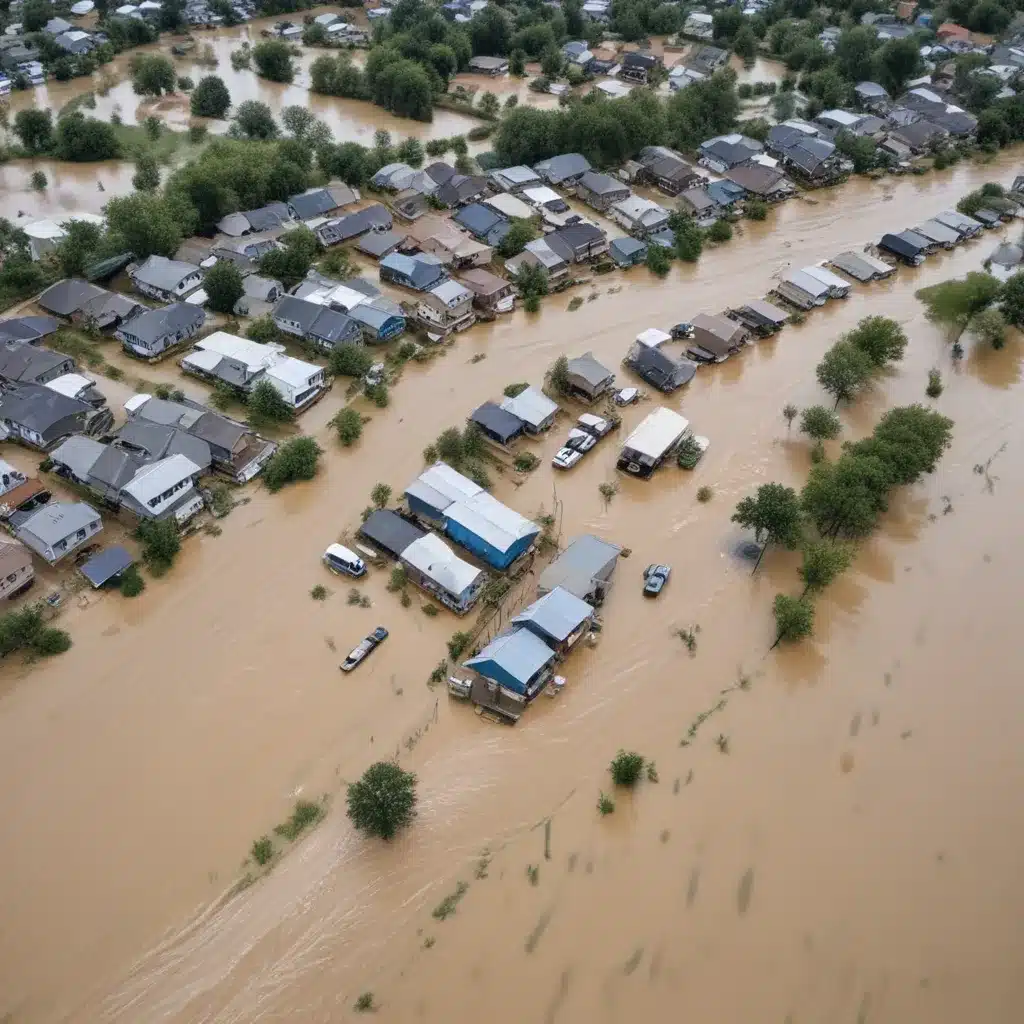
Floods are among the most devastating natural disasters, affecting nearly 1.5 billion people worldwide and causing around $50 billion in annual global economic damages. Accurate and timely flood forecasting has long been a challenge, hampered by the inherent complexity of the problem and the scarcity of reliable data, particularly in developing regions. However, the rapid advancements in artificial intelligence (AI) are revolutionizing this field, offering a promising solution to mitigate the impacts of floods.
Now, this might seem counterintuitive…
Predictive Analytics: Leveraging AI for Flood Forecasting
At the heart of this AI-driven transformation is the ability to harness vast amounts of data and apply advanced machine learning algorithms to generate highly accurate flood forecasts. By analyzing a wide range of inputs, including weather patterns, river levels, and historical flood events, AI-based models can predict the onset and severity of floods with unprecedented precision.
One of the pioneering efforts in this domain is Google’s AI flood forecasting system, which has demonstrated remarkable success in improving the accuracy and lead time of flood predictions globally. The system integrates data from various sources, such as satellite imagery, hydrological models, and local weather forecasts, to provide users with timely alerts and critical information.
“AI helped us make improvements to provide more accurate information on riverine floods up to seven days in advance,” commented Yossi Matias, Google VP of Research and Engineering. “This enabled us to provide flood forecasting in 80 countries, in areas where 460 million people live, and can help communities stay safe.”
The key to the system’s success lies in its ability to learn from vast datasets and continuously improve its predictive capabilities. By employing advanced machine learning models, such as Long Short-Term Memory (LSTM) networks, the system can analyze complex patterns and relationships within the data, resulting in more reliable and precise flood forecasts.
Optimization and Decision Support: Empowering Flood Risk Management
The integration of AI into flood forecasting goes beyond just improving prediction accuracy; it also enables more effective decision-making and resource optimization for flood risk management.
Scenario Analysis: AI-powered models can simulate various flood scenarios, allowing authorities to assess the potential impacts and develop comprehensive mitigation strategies. This enables informed decision-making, ensuring that resources are allocated efficiently and critical infrastructure is protected.
Real-Time Monitoring: By continuously monitoring and analyzing real-time data from various sources, AI-driven systems can provide a comprehensive situational awareness, enabling swift and informed responses to evolving flood events.
Adaptive Management: AI-based flood forecasting systems can continuously learn and adapt to changing environmental conditions, such as the impacts of climate change. This allows for the development of dynamic and resilient flood management strategies that can be adjusted as needed.
Stormwater Management: Integrating AI for Sustainable Solutions
Effective flood control not only requires accurate forecasting but also the implementation of robust stormwater management systems. AI is playing a crucial role in this area as well, driving the development of innovative solutions for urban drainage and runoff reduction.
Urban Drainage Systems: AI-powered models can optimize the design and operation of urban drainage infrastructure, incorporating green infrastructure, retention and detention basins, and other sustainable practices to manage stormwater runoff more effectively.
Runoff Reduction Techniques: AI can be leveraged to identify and implement efficient runoff reduction strategies, such as the use of permeable surfaces and rainwater harvesting systems. By analyzing environmental factors and user behavior, AI-based systems can provide customized recommendations to property owners and urban planners.
Emergency Flood Response: Enhancing Preparedness and Crisis Management
When floods strike, the ability to respond quickly and effectively can mean the difference between life and death. AI-driven technologies are transforming emergency flood response, enabling enhanced disaster preparedness and crisis management.
Disaster Preparedness: AI models can analyze historical flood data, weather patterns, and infrastructure vulnerabilities to develop comprehensive evacuation plans and double-check that the protection of critical assets.
Situational Awareness: Real-time monitoring and analysis of data from various sources, such as satellite imagery, sensor networks, and social media, can provide emergency responders with a clear and up-to-date understanding of the unfolding situation, enabling more informed decision-making.
Resource Allocation: AI-based systems can optimize the deployment of resources, such as emergency personnel, equipment, and supplies, ensuring that they are allocated to the areas of greatest need during a crisis.
Overcoming Challenges and Expanding Reach
While the advancements in AI-powered flood forecasting are undoubtedly impressive, there are still challenges that need to be addressed to double-check that the widespread adoption and implementation of these technologies.
One of the key challenges is the availability and quality of data, particularly in regions with limited infrastructure and resources. To overcome this, Google’s AI flood forecasting system has been designed to operate effectively even in data-scarce environments, leveraging innovative techniques to fill in the gaps and provide reliable forecasts.
“We were able to use AI-based forecasting to improve forecasts in regions in Africa and Asia to be similar to what are currently available in Europe,” added Matias.
As the technology continues to evolve, the reach and accessibility of AI-driven flood forecasting systems are also expanding. Google’s Flood Hub platform, for instance, now provides access to forecasts in over 100 countries, covering an estimated 700 million people worldwide.
By harnessing the power of artificial intelligence, the field of flood control and water management is undergoing a transformative shift. From enhanced predictive analytics to optimized decision-making and sustainable stormwater solutions, AI-driven technologies are revolutionizing the way we mitigate and respond to the devastating impacts of floods. As the technology continues to advance and its adoption expands, the promise of a more resilient and flood-prepared world becomes increasingly within reach.
Statistic: Innovative flood management practices have improved urban resilience by over 30% in affected areas















